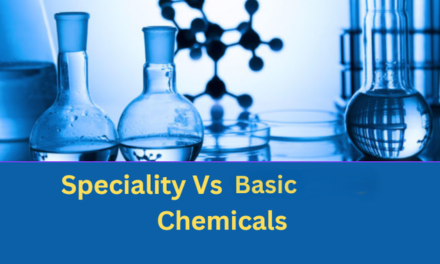Safety standards for handling hazardous basic chemicals are established to minimize risks to human health, property, and the environment. These standards are governed by international, regional, and national regulations and encompass guidelines for storage, transportation, usage, and disposal. Below are key safety standards and practices:
1. International Standards
- Globally Harmonized System (GHS):
- Provides a standardized approach to the classification and labeling of chemicals.
- Requires clear hazard communication through labels, pictograms, and Safety Data Sheets (SDS).
- ISO Standards:
- ISO 45001: Occupational health and safety management systems, applicable to chemical handling.
- ISO 14001: Environmental management systems for minimizing chemical-related environmental risks.
- International Maritime Dangerous Goods (IMDG) Code:
- Regulates the safe transport of hazardous chemicals by sea.
- UN Recommendations on the Transport of Dangerous Goods:
- Framework for transporting hazardous substances, including classification, labeling, and packaging.
2. Storage Standards
- Segregation:
- Store incompatible chemicals (e.g., acids and bases) separately to avoid dangerous reactions.
- Ventilation:
- Ensure proper ventilation in storage areas to prevent the accumulation of toxic or flammable gases.
- Temperature Control:
- Maintain temperature requirements to prevent chemical degradation or hazardous reactions.
- Secondary Containment:
- Use spill trays and bunds to contain leaks and spills.
- Signage:
- Clearly label storage areas with appropriate hazard signs and emergency contact information.
3. Personal Protective Equipment (PPE)
- Requirements:
- Gloves, goggles, face shields, and chemical-resistant clothing appropriate to the specific hazard.
- Respiratory Protection:
- Use respirators for handling volatile, toxic, or particulate chemicals.
- Training:
- Workers must be trained on the proper use and maintenance of PPE.
4. Handling and Usage
- Risk Assessments:
- Conduct risk assessments to identify potential hazards and establish safe handling procedures.
- Use of Tools and Equipment:
- Use chemical-specific handling equipment, such as fume hoods, pipettes, and closed transfer systems.
- Minimizing Exposure:
- Limit the duration and concentration of exposure to hazardous chemicals.
- SOPs (Standard Operating Procedures):
- Document detailed, chemical-specific handling protocols and ensure accessibility to all personnel.
5. Emergency Preparedness
- Emergency Response Plan:
- Include spill response, first aid, evacuation, and communication procedures.
- Spill Kits:
- Stock absorbent materials, neutralizers, and disposal containers in work areas.
- Safety Showers and Eyewash Stations:
- Install and maintain equipment for immediate decontamination in case of exposure.
- Fire Safety:
- Equip facilities with fire extinguishers suitable for chemical fires (e.g., Class D for metals, Class B for flammables).
6. Transportation Standards
- Labeling and Packaging:
- Follow UN-approved labels, hazard symbols, and packaging standards.
- Driver Training:
- Ensure drivers transporting hazardous chemicals are certified in hazardous material handling.
- Documentation:
- Include Material Safety Data Sheets (MSDS) and shipping manifests during transport.
- Secure Transport:
- Use proper tie-downs and secure storage to prevent spills or leaks during transit.
7. Disposal Standards
- Hazardous Waste Regulations:
- Follow local and international regulations, such as the Basel Convention for hazardous waste disposal.
- Neutralization:
- Treat chemicals to render them non-hazardous before disposal (e.g., neutralizing acids and bases).
- Authorized Facilities:
- Dispose of chemicals through certified waste management companies or facilities.
- Record Keeping:
- Maintain detailed records of chemical usage, disposal, and related incidents for compliance and traceability.
8. Workplace Safety Programs
- Training:
- Provide regular training on chemical hazards, handling protocols, and emergency procedures.
- Chemical Inventory Management:
- Keep an up-to-date inventory of hazardous chemicals, including quantities, locations, and hazards.
- Inspections:
- Conduct periodic safety inspections of storage, handling areas, and equipment.
- Incident Reporting:
- Establish protocols for reporting and investigating chemical spills, leaks, or exposures.
9. Regulatory Compliance
- OSHA (Occupational Safety and Health Administration) (U.S.):
- Standards for chemical hazard communication, exposure limits, and PPE use.
- European REACH Regulations:
- Strict standards for registering, evaluating, authorizing, and restricting hazardous chemicals.
- Local Guidelines:
- Adhere to country-specific safety standards and environmental regulations.
10. Technological Advances in Safety
- Real-Time Monitoring:
- Use sensors to detect leaks, spills, or hazardous gas concentrations.
- Automated Systems:
- Implement robotics and automation to minimize human exposure during handling.
- Digital Tools:
- Use software for tracking chemical inventories, training, and compliance documentation.
Conclusion
Implementing robust safety standards for handling hazardous basic chemicals is crucial to prevent accidents, protect workers, and safeguard the environment. By adhering to global best practices, regulatory requirements, and technological advancements, industries can create safer and more sustainable chemical management systems.
Hashtags
#ChemicalSafety #HazardousChemicals #SafetyStandards #IndustrialSafety #SafeChemicalHandling #WorkplaceSafety #EmployeeProtection #SafetyFirst #PPEForChemicals #SafeWorkEnvironment #HazMatSafety #HazardousMaterials
#ChemicalHazards #HazardControl #SpillPrevention #OSHACompliance #GHSStandards #SafetyRegulations #IndustrialCompliance #ChemicalHandlingRules #SafetyTraining #HazMatTraining #ChemicalSafetyAwareness #EmergencyPreparedness #SafetyEducation #TechForSafety #SafetyInnovation #SmartSafetySolutions #SafetyAutomation #DigitalSafety #EcoSafety #CommunitySafety #SustainableSafety #EnvironmentalProtection

















